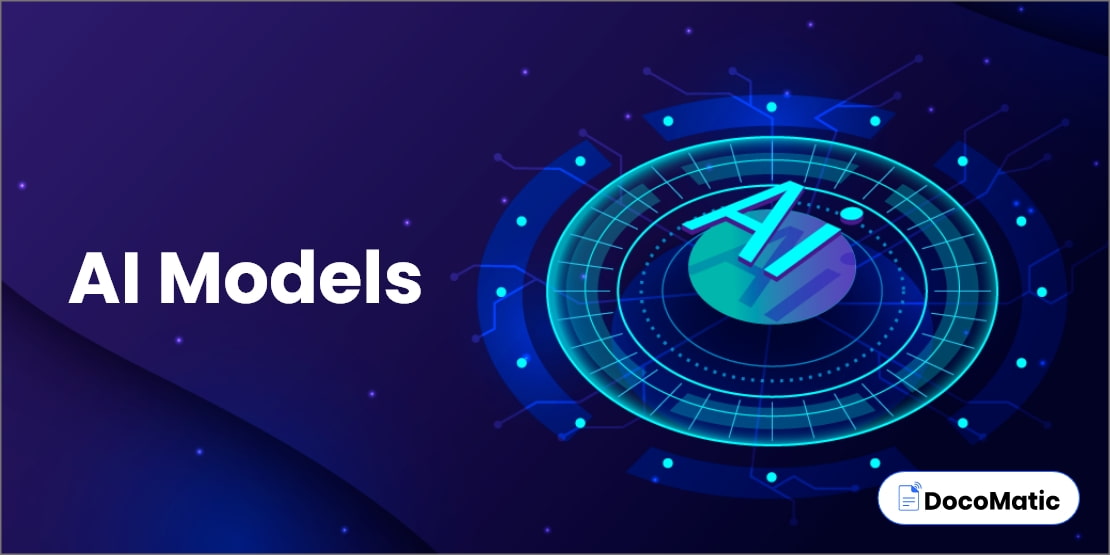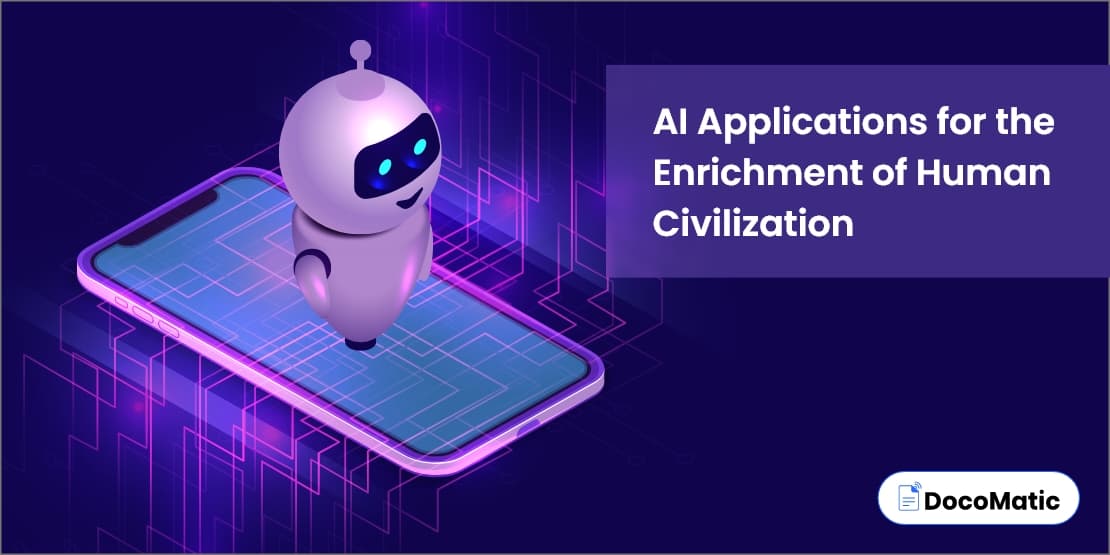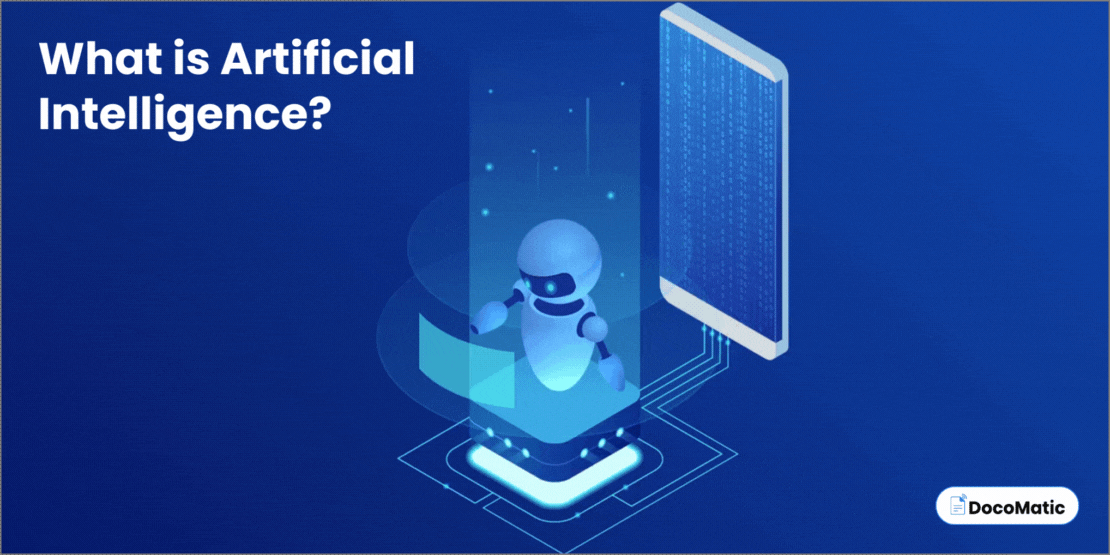“Artificial Intelligence (AI)” is a term that’s increasingly gaining popularity in the business and technological worlds. From content creation to speech recognition, artificial intelligence is revolutionizing businesses in almost every sector.
According to a Grand View Research report, the global artificial intelligence market was valued at USD 136.55 billion in 2022 and is projected to grow at a CAGR of 37.3% from 2023 to 2030. This growth is significantly aided by AI models, which give machines the ability to learn and decide for themselves without having to be explicitly programmed to do so.
But what exactly are AI models, and how do they work? We’ll cover everything you need to know about AI models in this blog post.
Table of Content
What are AI Models?
To understand the AI model, we must first understand artificial intelligence. Artificial intelligence (AI) refers to creating computer systems that can perform operations like speech recognition, visual perception, decision-making, and natural language processing that ordinarily need a human being.
Finding patterns in data and making predictions based on those patterns is the basic goal of AI models. They are created by providing the algorithm with a large amount of data, allowing the model to learn and improve over time.
Simply put, AI models are taught how to recognize the connections between different pieces of data and base decisions on those connections. Moving ahead, let’s check out 4 types of AI models.
4 Types of AI Models
Mainly, there are 4 types of AI models, including
- Supervised learning models
- Unsupervised learning models
- Reinforcement learning models
- Deep learning models
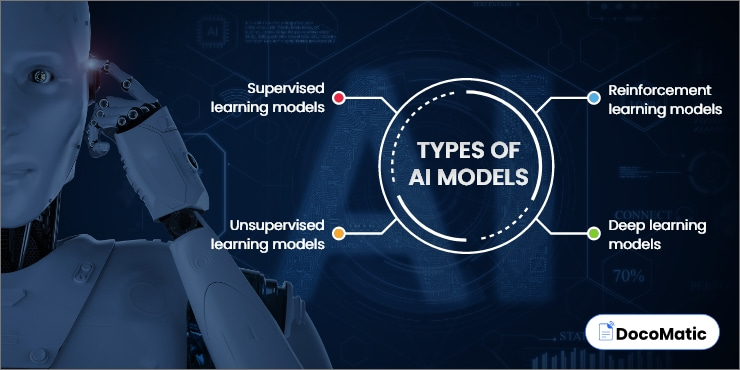
1. Supervised learning models
Supervised learning models get knowledge from already categorized and labeled data.
While analyzing the labeled data, the algorithm learns to recognize patterns and characteristics. It then applies this understanding to the new data set.
- Linear regression
- Logistic regression
- Linear discriminant analysis
- Decision trees
- Support vector machines
AI applications of supervised models include:
- Image classification
- Speech recognition
- Linear discriminant analysis
- Natural language processing
For instance, supervised learning may be used to train a model to detect several object types in an image or various words in a sentence.
2. Unsupervised learning models
Unsupervised learning AI models differ from supervised learning as these models don’t need labeled data to work. Instead, the algorithm examines the data to find patterns and combine similar types of data points.
- Principal component analysis
- Clustering
- Anomaly detection
Unsupervised learning is frequently used to find hidden links and patterns in data that are challenging or impossible for a person to find.
Without any prior knowledge of client preferences, unsupervised learning, for instance, may be used to group similar customers based on their purchasing histories.
3. Reinforcement learning models
Reinforcement learning models gain knowledge through interaction with the environment and feedback by way of rewards or punishments. Over time, the algorithm develops the capability to make decisions that optimize the overall reward.
In games like Go or Chess, reinforcement learning is frequently used to train AI models to make decisions that will help them win.
4. Deep learning models
A subclass of machine learning models called the “deep learning model” is created to simulate how the human brain functions. These models are created using hierarchically structured neural networks, which are made up of layers of interconnected nodes.Deep learning model is highly effective when tackling complex tasks like
- Speech recognition
- Image classification
- Natural language processing
AI vs. Machine Learning vs. Deep Learning: What’s the Difference?
Artificial intelligence, or AI, is a broader concept in the area of computer science that focuses on building machines or software that can perform specific tasks that ordinarily need a human being. Machine learning and deep learning are only two examples of the various tools and techniques that constitute artificial intelligence.
Machine learning is the process of creating algorithms that enable computers to learn from data and make predictions or decisions depending on it. To put it another way, machine learning is a subset of artificial intelligence that trains machines to learn from data without having that information explicitly coded into them. While every ML model falls under the category of AI models, not all AI models are necessarily ML models. Data sets play a crucial role in data science and machine learning, as they are used to train and evaluate machine learning models.
- Data-driven decisions
- Automation and efficiency
- Reduced biasness
Deep learning is a more sophisticated kind of machine learning that uses artificial neural networks to give computers the ability to learn from massive volumes of data. With multiple layers of artificial neurons that process information in a hierarchical manner, deep learning algorithms are created to resemble the structure and operation of the human brain closely.
- AI is a vast domain of computer science that focuses on developing intelligent software or computers.
- Creating algorithms that enable computers to learn from data without explicit programming is a key component of machine learning, a subset of AI.
- Deep learning is a more sophisticated kind of machine learning that makes use of artificial neural networks to give computers the ability to learn from a significant amount of data.
Common Types of AI Algorithms
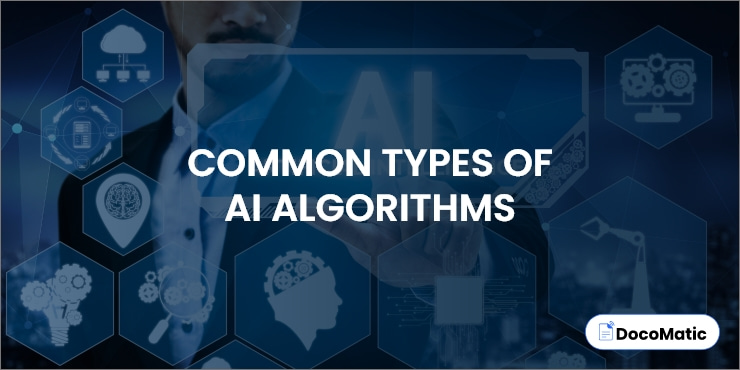
Selecting the right algorithm for a specific problem is necessary in order to build an AI model.
Deep learning models are highly effective when tackling complex tasks like
- Linear regression
- Logistic regression
- Linear discriminant analysis
- Decision trees
- Naive Bayes
- K-Nearest Neighbors
- Learning vector quantization
- Support vector machines
- Bagging and random forest
- Deep neural networks
1. Linear regression model
Linear regression model is one of the types of machine learning models. This machine learning model is popular among data scientists working in the domain of statistics. It is a straightforward algorithm that is employed to predict a continuous value. In order to predict the value of a dependent variable on the basis of the values of one or more independent variables, it seeks out the best-fit line.
2. Logistic regression model
An algorithmic approach used for tasks relating to classification is logistic regression. In contrast to linear regression, it predicts binary values (yes or no) rather than continuous values.
3. Linear discriminant analysis
To determine the class of a particular data point, linear discriminant analysis (LDA) is utilized. It functions by identifying the most optimal linear combination of attributes that divides up the data points into different classes.
4. Decision trees
Decision tree is applied to complex problems relating to classification and regression. It segments a dataset into ever-tinier subgroups while also developing an associated decision tree progressively. The outcome is a tree containing leaf nodes and decision nodes.
5. Naive Bayes
Naive Bayes algorithm is used for solving complex problems relating to classification. It operates by figuring out the probability of each class given a set of input data.
6. K-Nearest Neighbors
K-Nearest Neighbors (KNN) is an algorithm that is used to resolve both regression and classification issues. In order to generate a final prediction, it locates the K nearest data points inside the training data and uses their majority class.
7. Learning vector quantization
Learning vector quantization (LVQ) is basically employed for classification issues. It operates by locating the prototype vector that is closest to the input dataset and then associating the input with the class of that prototype vector.
8. Support vector machines
Support vector machines (SVM) is a widely used algorithm among data scientists and is utilized to solve both regression and classification tasks. It operates by identifying the optimal hyperplane that categorizes the data points.
9. Bagging and random forest
For classification and regression issues, ensemble learning algorithms like bagging and random forest are utilized. They function by merging the outcomes of multiple decision trees to increase the final model’s accuracy.
10. Deep neural networks
Deep neural network (DNN) is a class of algorithms that is used to tackle complicated issues, including image and speech recognition and natural language processing. For data analysis and categorization, the algorithm employs several layers of artificial neurons.
Developing an AI Model
When creating artificial intelligence (AI) models, a model library is a vital tool for the developers. Other two important variables that affect the development of AI systems are human behavior and the decision-making process. However, the process of creating an AI model can be time-consuming and entails several steps.
- Step-1: Collecting and preparing data
- Step-2: Choosing a suitable algorithm
- Step-3: Training and testing the model
- Step-4: Tuning the model for optimal performance
Step-1: Collecting and preparing data
The collection and preparation of the data is one of the most important steps in the development of an AI model. The quality and applicability of the input dataset determine the accuracy and quality of the model’s output. The information must be reliable, detailed, and unbiased.
Finding data sources and deciding what information needs to be collected are both parts of data collection. After that, the data has to be filtered and preprocessed to get rid of errors, inconsistencies, and unnecessary information.
Step-2: Choosing a suitable algorithm
Selecting an appropriate algorithm to analyze the data and provide the required result comes after the data have been collected and prepared. The kind of issue being addressed, the nature of the input dataset, and the intended output all influence the choice of algorithm.
Deep learning algorithms, reinforcement learning algorithms, unsupervised learning algorithms, and supervised learning algorithms are only a few of the various types of algorithms that are accessible. Each algorithm has certain uses and characteristics.
Step-3: Training and testing the model
Training and testing the model comes next after selecting the most suitable algorithm. During training, the model is taught to identify patterns and make precise predictions by making use of input data.
In testing, the model’s performance and accuracy are assessed using a set of test data that was not utilized during training. The purpose of testing is to evaluate the accuracy of the model and detect any errors or limitations.
Step-4: Tuning the model for optimal performance
The last step is to fine-tune the model for optimum performance once it has been trained and tested. To increase the model’s performance and accuracy this entails adjusting its parameters.
Testing the model, detecting any errors or limitations, and implementing changes to the algorithm or data are all parts of the iterative process of tuning the model. The basic aim here is to get the model to operate in the best way possible.
FAQs
AI modeling refers to the process of mandating AI models to perform specific tasks or make predictions based on the data provided. It further trains AI models to recognize certain patterns and uses this information to perform the task at hand. AI modeling helps in decision-making by producing results that are as good as those produced by human beings.
The Turing machine is a theoretical machinery model invented by Alan Turing, a British mathematician and computer scientist in 1936. It was a machine that, by changing data in 0’s and 1’s (simplifying data to its essentials) could simulate any computer algorithm.
There are several real-world applications for AI models in multiple industries. The following are some of the most popular applications:
- Speech and image recognition
- Natural language processing
- Identifying and preventing fraud
- Autonomous vehicles
- Virtual assistants
- Predictive analytics and maintenance
- Medical diagnosis and treatment
When choosing an AI model, you should take into account the following aspects:
- What sort of issue are you attempting to resolve? (e.g., classification, clustering, regression)
- Your data’s volume and level of complexity
- Available computing resources for your project (e.g., computing power, data storage)
- The degree of accuracy and speed necessary for your project
An AI model must be evaluated in order to establish its efficacy and pinpoint areas that need development. The metrics listed below can be used to gauge how well your AI model is performing:
- Accuracy: Measures the proportion of accurately predicted values.
- Precision: Measures the proportion of accurate positive predictions among all positive predictions.
- Recall: Calculates the proportion of correctly predicted positive cases among all applications of positive cases.
- F1 score: A metric for measuring the performance of a model that combines precision and recall.
- Confusion matrix: A table that provides an overview of the model’s true positive, true negative, false positive, and false negative predictions.
It can be challenging and difficult to create artificial intelligence models. Some of the most prevalent issues include:
- Securing and gathering data of quality for the model
- Selecting the appropriate hyperparameters and algorithm for the model
- Preventing the model from being over- or under-fit
- Modifying the model to accommodate large datasets
- Making sure the model is transparent, fair, and accurate
- Addressing ethical and legal considerations relating to the model’s use and impact.
Conclusion
AI models have various applications across several industries and have become a vital component of today’s technology. With advancements in the technological world, organizations of all sizes now have easier access to developing and deploying AI models.
Companies and different businesses can make use of AI technology to boost productivity and drive development by understanding different AI model types, applications, and processes that create an AI model.
